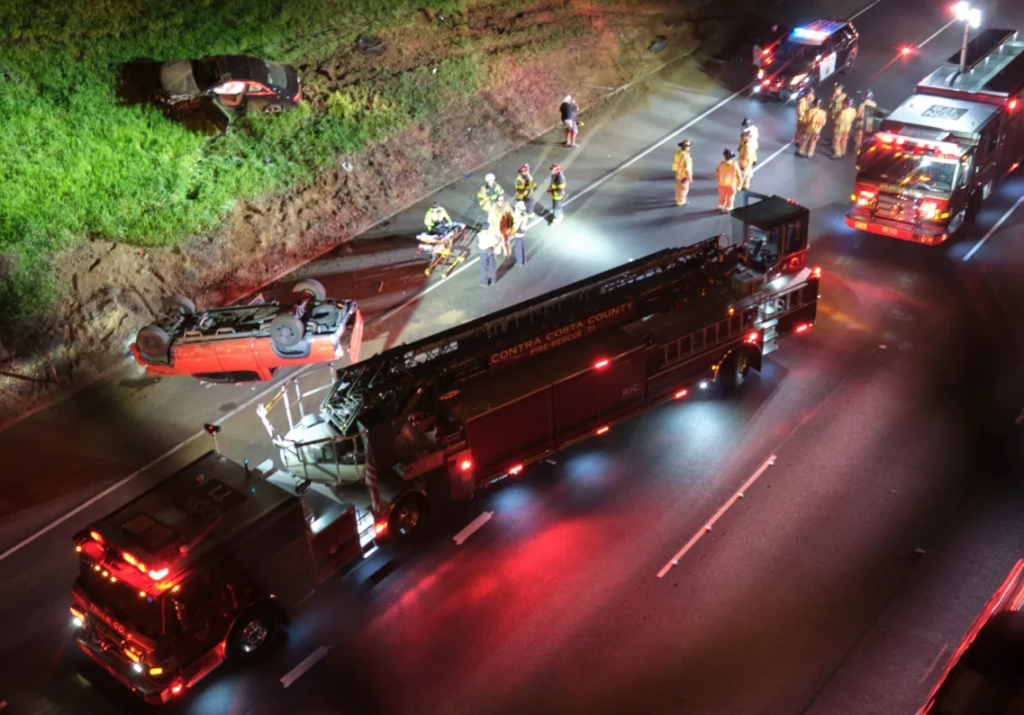
Modern cars are incredibly capable of evasive driving. On-board stability systems prevent us from losing control, and modern tires and suspensions provide our vehicles far more agility than ever before. And yet with all this design and technology available, studies show that the average American driver will drive straight into a collision instead of using even half of their automobile’s evasive capability.
Why? Three reasons:
- First, a minuscule percentage of American drivers have been trained in any form of evasive driving. The only evasive training offered in most driver education courses is the admonition to not lock up your tires when braking! This admonition continues even today, when all new cars have anti lock braking technology – incidentally developed to overcome our tendency to ‘lock ’em up’!
- Second, nobody practices evasive driving. Even if exposed to it, the exposure is in a specialized training program, on a dedicated location with artificial barriers and scenarios. Nobody practices evasive driving on public roads! Even when some hot-shoe tries it, they usually end up in a ditch, around a tree or in someone’s living room. Their escapade then ends up on local TV news, further cementing a societal aversion to practice.
- Finally, we don’t think we need it. Despite the fact that more than 90% of crashes involve human error, three-quarters (73 percent) of US drivers consider themselves better-than-average drivers. Why worry about getting better at what we do when we’re already so good at it!
So, we don’t even think about our capability to response. We never learn new skills and we don’t practice the ones we have. Any minimal skills we’ve been exposed to atrophy from disuse. And we keep driving straight into collisions, in blissful ignorance of our own inability.
What does this have to do with crisis communication?
Think of an incident as a collision between your reputation and public outrage. Are you ready to respond? Do you have the core skills to avoid reputational ruin? Have you practiced your immediate response actions? Do you know how to ‘steer around’ the pitfalls of response public information?
Most likely not. Here’s what will probably happen to you in an incident:
- An incident occurs and you’re not even notified
This is your reputational ‘should have seen it coming‘ moment. You can’t avoid what you don’t see. - You’re notified but you don’t know the extent of the damage
This is your reputational ‘should have called the police‘ mistake, when the damage to your vehicle (or reputation) is much greater than you thought, but you discovered it too late. - You don’t have messaging ready to use
This is your ‘license and registration please‘ moment, the reputational equivalent of not having your license, registration and insurance card with you. You’d be OK if only you’d had the information the police (or your public) need. - You can’t get draft content approved and out to stakeholders
This is your ‘waiting for a tow truck‘ moment (or hour, or longer) when everyone else moves along and you’re sitting in a damaged car in the dark, waiting for ‘Jiffy Towing’ to show up… hours later. - You report the accident too late, and lose the ‘coverage sprint’
The other driver reports damage and injuries before you do and settlement actions swing in their favor. This is your ‘should have spoken sooner‘ moments when you realize that public opinion is solidifying….against you.
So how do you avoid these moments?
- “Should have seen it coming”
Be sure you’re notified immediately, and that you have access to the same response information that is being shared in required notifications. - “Should have called the police!”
Be ready to assess incident severity from a reputational viewpoint. Use incident and issue assessment forms to quickly identify severity of the incident and potency of related issues. - “Sorry, I don’t have my license and registration”
Have draft and pre-approved content ready for modification and use. - “Waiting for a tow truck”
Streamline approval processes so you can keep up with your public, and ensure you have rapid dissemination capability so they actually get it. - “Should have spoken sooner”
All of the above: Quickly determine what you must say. Have your statement templates and key messages ready for use. Streamline your approval process and get information out to your key stakeholders.
Don’t let lack of preparation or assumption of competency jeopardize your communication capability. Be ready to avoid reputation damage and the associated expense and disruption.
Start fast! Be prepared! For more information, read my ‘Gaining Traction‘ blog.
I welcome your Questions or Comments



